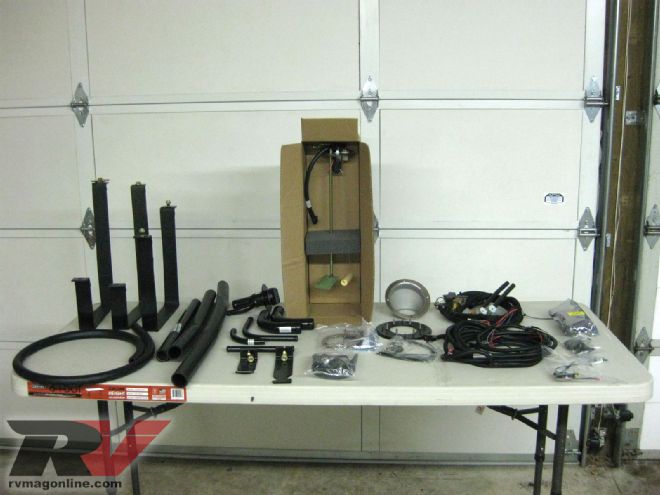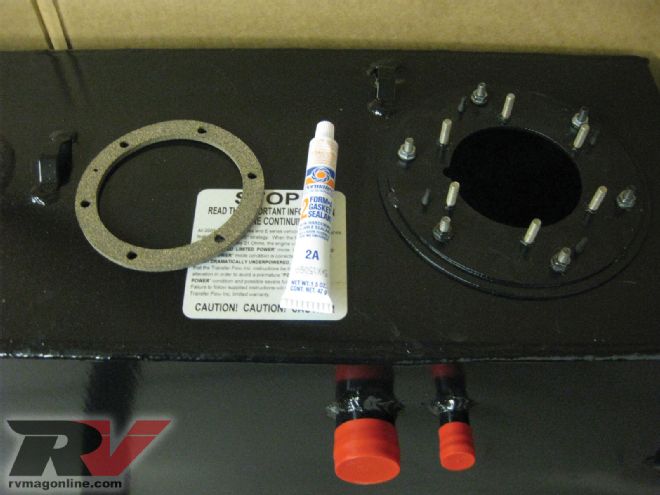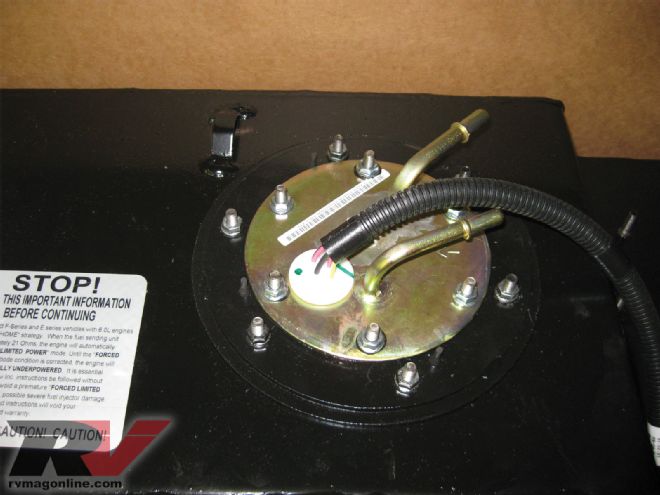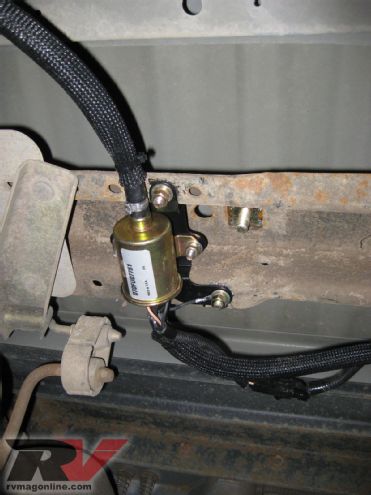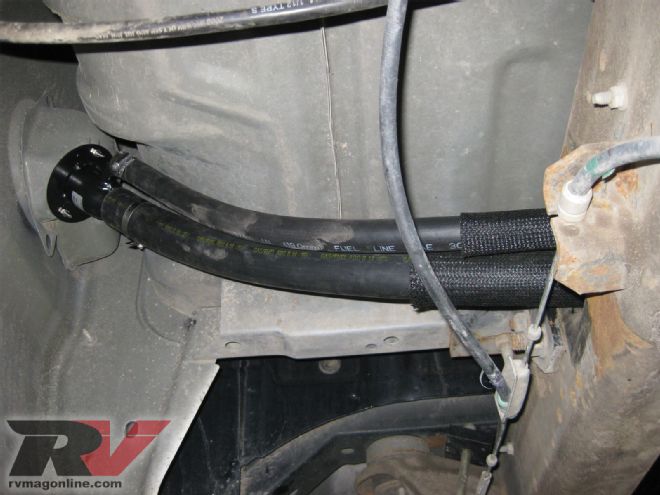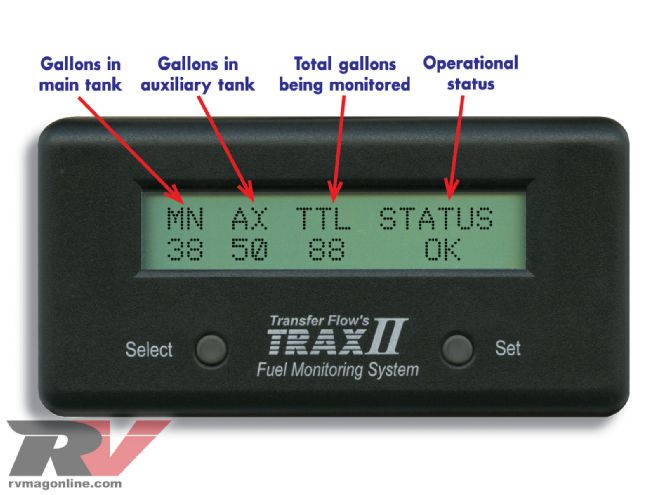My project started out simple enough. I needed to find a new tow rig that could handle extended road trips to motorcycle shows and events. It also would need to transport my motorcycles, inventory and displays to those venues as well as handle occasional off-road excursions in the backcountry.

| transfer Flow Auxiliary Fuel Tank 50 Gallon Mid Ship Tank
I enjoyed the flexibility of my original GMC truck and camper, but it was time for a change. But I couldn't justify buying a full-size motorhome for business purposes. The new tow rig had to be four-wheel drive too, which is a must for Northern Idaho, where there's snow six months out of the year.
The old 3/4-ton GMC just wasn't up to the task, and its short bed really reduced my options for future campers. The Duramax/Allison actually did the towing job effectively for more than 15,000 miles, including a 6,000-mile trip from Idaho to Cabo San Lucas, Mexico, and back. But in the end, it didn't fit in with the growth plans for Black Dog Cycle Works.
Making a Decision
My research for the right truck actually began last year. After looking at the various specs for a 1-ton dually and factoring in the "actual" weight of the larger RV campers, I realized that this was going to take a lot more time.

| transfer Flow Auxiliary Fuel Tank 2006 Ford F550
The VIN tag on my short-bed Bigfoot camper listed a weight of 2,000 pounds, but it actually turned out to be 3,000 pounds empty. I knew that if I found a larger Bigfoot camper it would ultimately be pushing 4,000 to 5,000 pounds, dry. I quickly determined that I would be way over the stated specs of a 1-ton tow rig. With the GMC, I had to blow past the highway weigh stations because I knew it was overloaded, and I did not want to worry about that again.
My search criteria for the ultimate tow rig limited me to a GM Kodiak/Topkick or a Ford F-450/F-550 (a Dodge/Sterling 5500 was out of my budget). I wasn't a big Ford fan after owning two GMC trucks, and the Kodiak/Topkick was too tall for daily use anyways. As it turned out, the Ford was a little more practical for everyday driving.
On the Internet I came across a clean, low-mileage '06 Ford F-550 Lariat crew cab 4x4 with the 6.0L Powerstroke from a dealer on eBay. I ended up buying it for a fraction of the original $70K sticker. I arranged to have it shipped from Texas and immediately got to work building it to my specs.
Bad Information
Before I actually bought the truck, I questioned the dealer relentlessly on the equipment and condition. Does it have dual fuel tanks? He said, "Yes, it does." Given the long distances I drove and my experience with the small, 26-gallon tank of my GMC (looking for fuel every 200 miles), I wanted to have as much travel range as possible to take advantage of truck-stop fuel prices and not waste time stopping for fuel. In the western U.S., sometimes the "next exit" is 40 miles away, and there were no guarantees they would even have diesel. And if they did, you were at the mercy of their prices.

| The old 3/4-ton GMC just wasn't up to the task, and the short-bed really reduced my options for campers.
When the truck finally arrived, I went to put fuel in it right away, only to be greeted by a false blank behind the front fuel door. I called the dealership immediately. Apparently the salesman had only looked out the window and seen that it had two fuel doors before answering my question about dual tanks. That's why you have to be careful when you shop online for a truck.
A Solution
I needed to do some research to determine my options for a second fuel tank for the Ford F-550. The truck came with a 40-gallon tank located behind the axle, so my research would be limited to a midship unit. Putting an auxiliary tank in the bed was not an option because of the camper I planned to buy. Not to mention I wouldn't want to permanently lose the entire length of the truck bed. The 8-foot bed is very handy for hauling motorcycles when not using a camper.

| The shipping container weighed about 200 pounds, and so it helped to have a friend along and a couple of solid floor jacks.
Ford offered a 19-gallon midship tank (this is the tank that should have been on the truck), but then I found that Transfer Flow of Chico, California, offered a whopping 50-gallon midship auxiliary tank. This sounded like the ideal setup and would give me a total fuel capacity of 90 gallons. After I spoke with the staff at Transfer Flow to determine that I was getting the correct unit for my application, I ordered it.
I liked the fact that I did not have to cut into any of the factory fuel lines or electrical wires, and the fuel was transferred from the auxiliary tank to the main tank using a separate pump. In the unlikely event that something went wrong with the auxiliary system, the main fuel tank would work fine and would not leave me stranded on the side of the road.
Wow, It’s Heavy!
When the delivery truck arrived, I knew I was in for something special from the size and weight of the shipping container. I planned to use a friend's shop that had a lift to make the installation easier. I don’t pretend to be an expert mechanic, but after talking to the folks at Transfer Flow, I figured I could probably handle the job.
I wanted to save as much money as possible, and installing it myself would save me hundreds of dollars. Besides, any money I saved now would go into filling the tank with diesel later! I invited a friend over to help and used beer as payment. Unfortunately, once my friend and I arrived at the shop, I discovered that the lift couldn't handle the F-550. It was time to break out the creepers.
For the sake of simplicity, I'll just tell you that the installation went smoothly and that, overall, I was pleased with the Transfer Flow midship auxiliary fuel tank. The quality of the product was excellent, the installation instructions were clear, and the diagram they included was very helpful. The best news is that I'll never have to worry about running on empty again.
